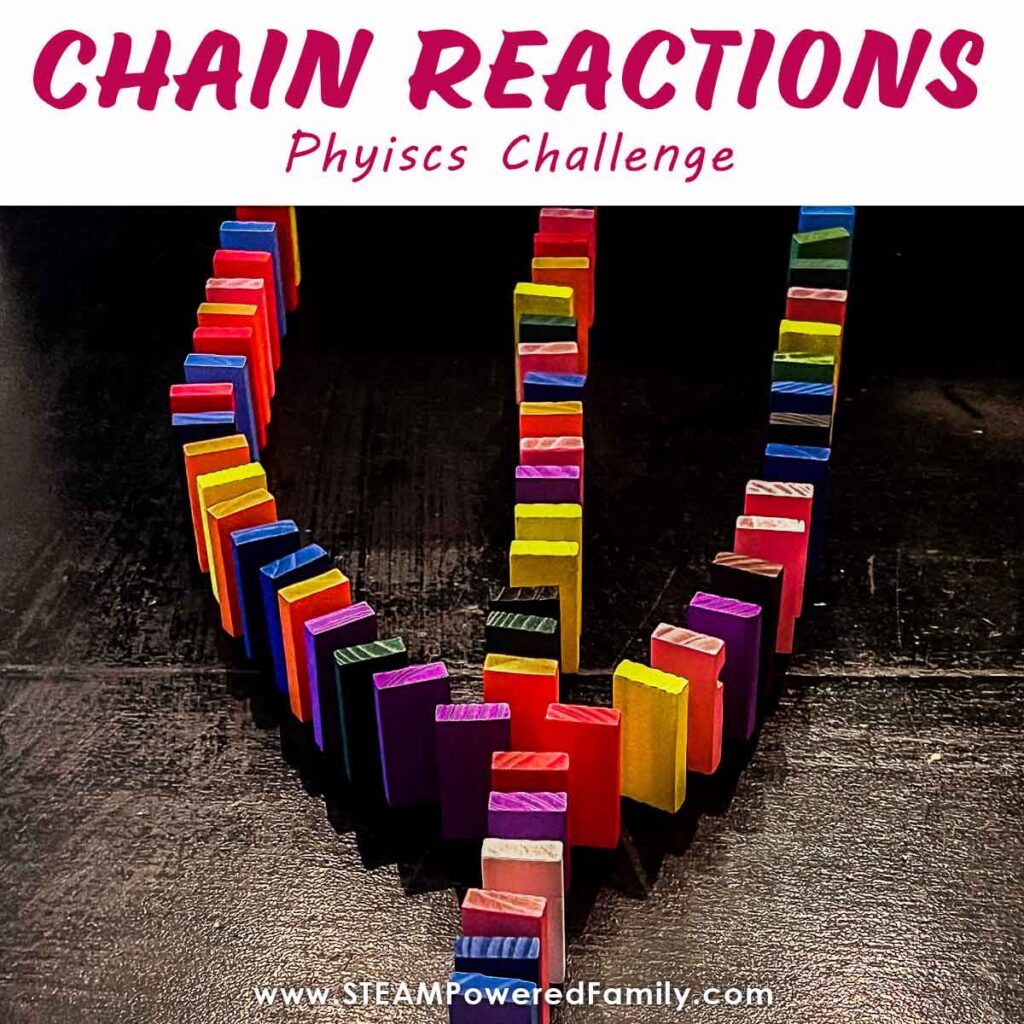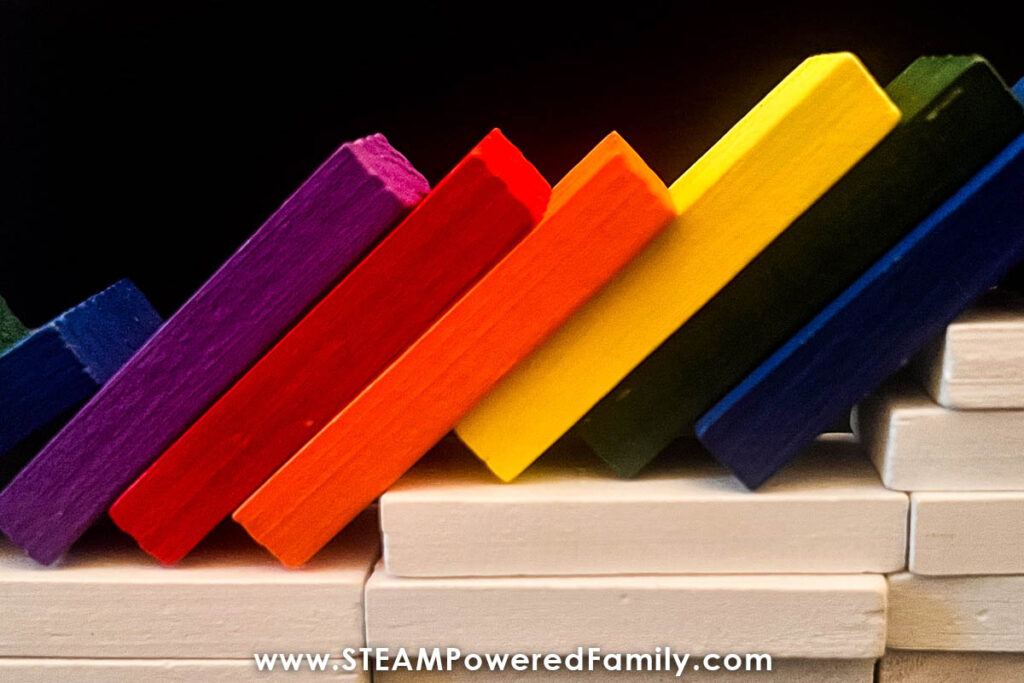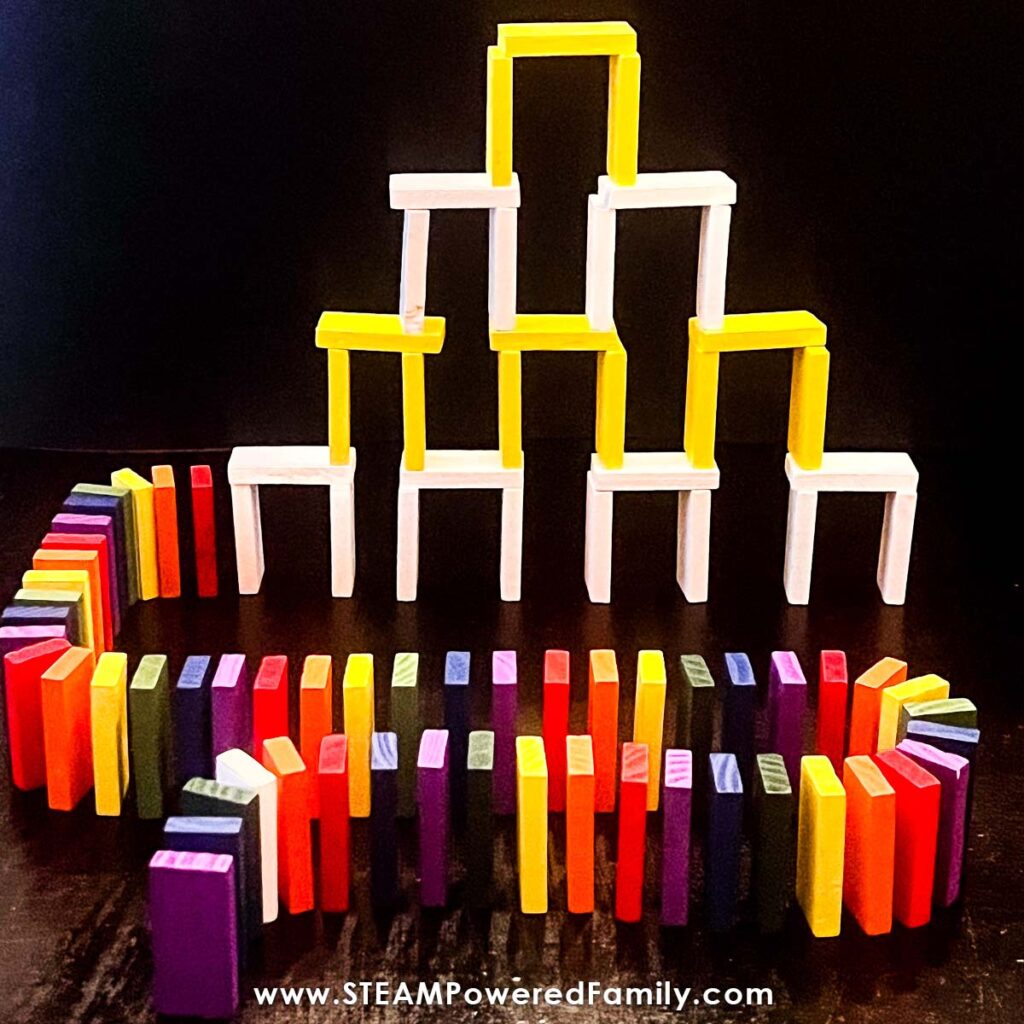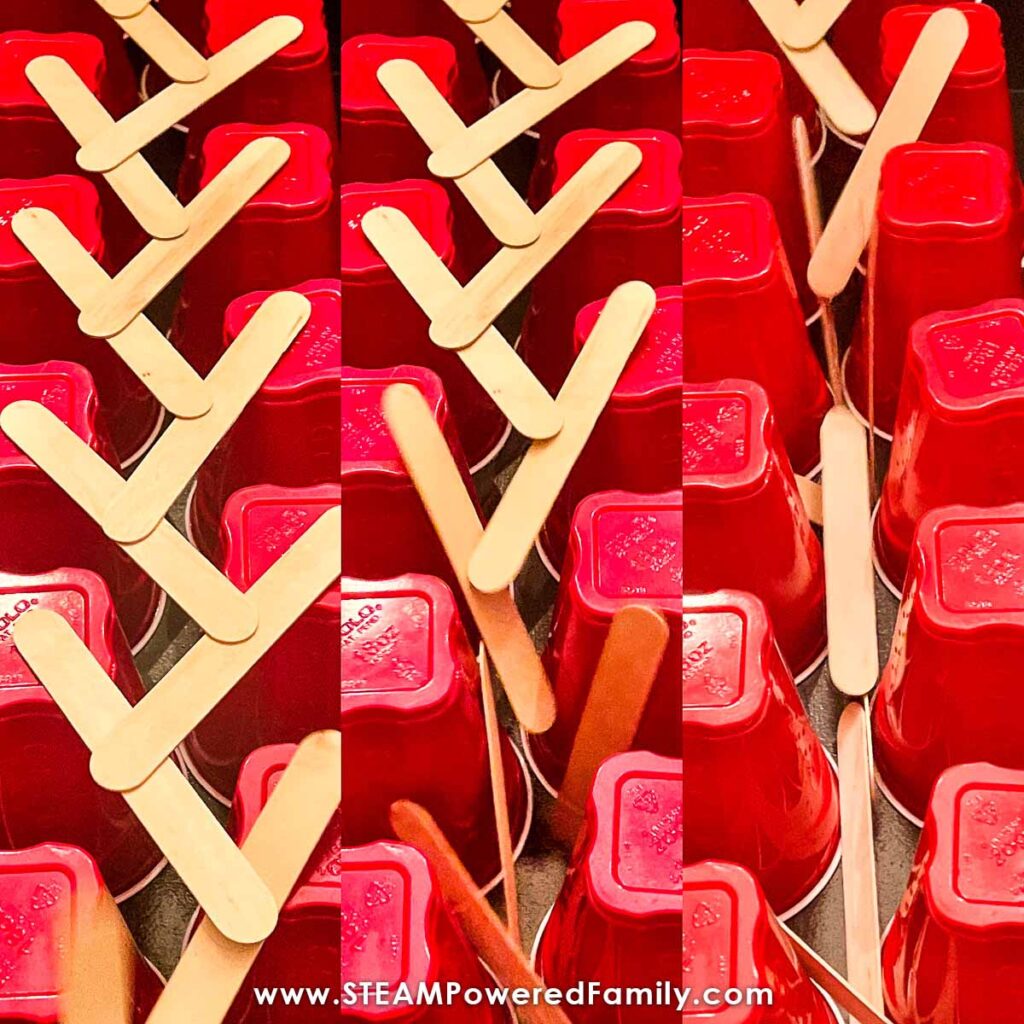Easy Chain Reactions
Chain reaction experiments are always a hit with kids. They are wildly engaging and inspire some solid creative thinking. In addition, setting up chain reactions for kids teaches valuable lessons in patience and persistence because inevitably you will not be able to complete a project without knocking it over at least once before you’re finished. Chain reactions are just plain fun science in action! Best of all, they are a fantastic No Prep STEM Activity!
Easy Chain Reaction Physics Experiments
Disclaimer: This article may contain commission or affiliate links. As an Amazon Influencer I earn from qualifying purchases.
Not seeing our videos? Turn off any adblockers to ensure our video feed can be seen. Or visit our YouTube channel to see if the video has been uploaded there. We are slowly uploading our archives. Thanks!
What is a Chain Reaction?
First let’s take a look at the definition of a chain reaction. Quite simply a chain reaction is a series of events that occur because of a previous event. A classic example that perfectly illustrates a chain reaction is a simple line of dominoes, when you knock over the first domino and it will knock over the next and so on until the end of your line.
Check out this quick video of our chain reaction projects. If you can’t see the video, visit the STEAM Powered Family YouTube Channel to catch this short and fun video. While there, don’t forget to like and subscribe!
Vocabulary Check
Chain Reaction: A chain reaction is a series of events that occur because of a previous event.
Potential Energy: The energy an object may have based on its size and position.
Kinetic Energy: The energy of motion.
Gravity: Force that pulls objects toward each other. Like the pull of you and others toward the earth.
Friction: Resistance encountered by an object as it moves against another object
Domino Chain Reactions
Supplies
You may also want some books, Lego, ramps, or other items to build your chain reaction over for more elaborate and fun chain reactions.
How Does It Work?
A domino standing up on one of its short ends is holding potential energy or energy an object may have based on its size and position. When you line dominos up in a row they each have this potential energy. If you knock over the first domino in a row this potential energy is then changed into kinetic energy, which is the energy of motion. Then it is basically gravity taking hold. Gravity will pull each domino down and cause it to crash into the next one, over and over and over!
There are other factors that will affect how dominoes fall including the size and surface of the domino itself, the surface it is sitting on and how far apart the dominos are spaced.
Shiny dominos will have more of a slide than wooden ones, and setting up on a rough surface will cause more friction (friction is resistance encountered by an object as it moves against another object) in turn it will stop the dominoes from slipping backward as they fall which in turn will actually slow the back slide of a domino and speed up the falling of the row!
Making Dominos Fall Uphill
You can even make dominos fall uphill and back down! If you stack dominoes or blocks or even books – as long as one domino can fall with enough force to knock over the one in front of it the dominos will fall – it’s a great conversation starter to have with kids – if we stack these up steps will they still knock each other over – why?
Domino towers are another great way to see a chain reaction in motion. Build your towers with dominos on their side or their end leaving space in between each so that the next layer of dominoes is resting between two of the blocks below it and continue to build as high as you can. Knock the lower corner out and watch the dominos cascade down.
Domino possibilities are really endless and different every time you try! Try to make the dominoes fall uphill and down – or in a spiral, or a zig zag. Kids will need to determine the correct spacing and placement to have any of these work. I suggest starting small and building confidence in what they’re doing. I also love to incorporate other factors like a toy car or a ball – any object that can set off the chain reaction that you are looking for gives an amazing opportunity for learning!
Solo Cups and Craft Sticks Chain Reaction
Believe it or not you can make a cool chain reaction with a stack of red solo cups and some large craft sticks!
Supplies
Red Solo Cups or other plastic cups
Jumbo Craft Sticks
How Does it Work?
Start with making two staggered lines of the solo cups bottom up so you have a solid surface. Place one craft stick across the two end cups. Then place the next stick in the center of the first stick and on one of the next cups in line. Repeat placing the next stick in the center of the previous one and on the alternating cup. Continue to the end of the line of cups.
Starting the chain reaction
Now these sticks have the same potential energy as the dominoes standing on their end. All you have to do to set off the chain reaction and convert that energy is to pull one of the first cups out from under its stick and let gravity do its job! Pulling the cup will cause every other stick to fall in a quick chain reaction.
This one is especially nice for younger kids because the cups and sticks are sturdier than dominoes and will spark their interest in learning more about cool chain reactions and how they work. Once you’re comfortable with a simple line – let them loose – add some props and watch them fall! See if you can make other configurations. Predict what will happen! Have fun!
These chain reaction experiments really have the potential to teach your kids about energy, reactions and gravity and have a lot of fun while learning!
More Chain Reactions
Looking for more chain reaction ideas?
Why not try building a Rube Goldberg Machine, the ultimate chain reaction machine?
Try Exploding Craft Sticks from our friends at Frugal Fun for Boys and Girls





